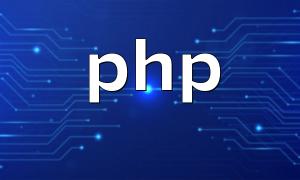In the digital age, email subscriptions have become an essential method for websites to engage with users. By regularly sending updates, promotions, or news, you can increase user retention and engagement. This article explains how to build a full-featured email subscription system using PHP.
The first step is to create a database table to store subscriber information, such as their email address and the time they subscribed. You can use MySQL or any relational database. Here's a sample table structure:
CREATE TABLE subscriptions (
id INT AUTO_INCREMENT PRIMARY KEY,
email VARCHAR(255) NOT NULL UNIQUE,
subscribed_at DATETIME DEFAULT CURRENT_TIMESTAMP
);Next, you need a front-end form to collect the user's email. The form is straightforward with just an input field and a submit button:
<form action="subscribe.php" method="post">
<input type="email" name="email" placeholder="Enter your email" required>
<button type="submit">Subscribe</button>
</form>Once the form is submitted, the backend script needs to validate the email format and check if the user has already subscribed:
$email = $_POST['email'];
if (!filter_var($email, FILTER_VALIDATE_EMAIL)) {
echo "Please enter a valid email address.";
return;
}
// Check if already subscribed
$query = "SELECT * FROM subscriptions WHERE email = '$email'";
$result = mysqli_query($connection, $query);
if (mysqli_num_rows($result) > 0) {
echo "You are already subscribed.";
return;
}
// Add to database
$query = "INSERT INTO subscriptions (email, subscribed_at) VALUES ('$email', NOW())";
mysqli_query($connection, $query);
echo "Subscription successful!";After a successful subscription, it's a good practice to send a welcome email. Here's how to do it using PHP's built-in mail function:
$to = $email;
$subject = "Welcome to Our Newsletter";
$message = "Thank you for subscribing! We'll keep you updated with the latest news and offers.";
$headers = "From: newsletter@example.com";
mail($to, $subject, $message, $headers);In production environments, it's recommended to use libraries such as PHPMailer or services like SendGrid for more robust email delivery and additional features.
It's essential to allow users to unsubscribe easily. You can include an unsubscribe link in your emails like this:
$unsubscribe_link = "http://example.com/unsubscribe.php?email=" . $email;
$message .= "
If you no longer wish to receive our emails, you can unsubscribe using the link below:
";
$message .= $unsubscribe_link;This link should point to a backend script that removes the user’s email from your database.
By following these steps, you can build a functional email subscription system using PHP. Remember to handle user data responsibly and comply with privacy regulations like GDPR.
You can enhance this basic setup by adding features like email confirmation, personalized content, segmentation, and analytics to make your subscription system more effective and professional.









